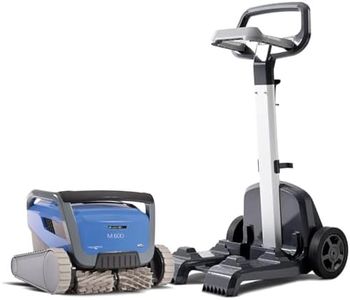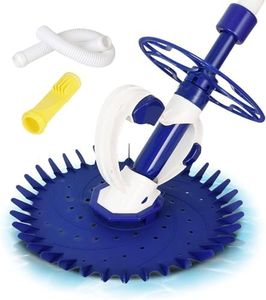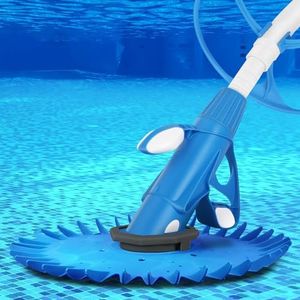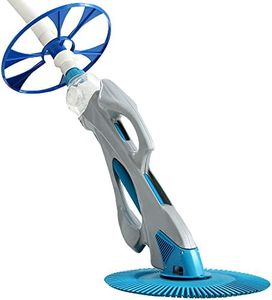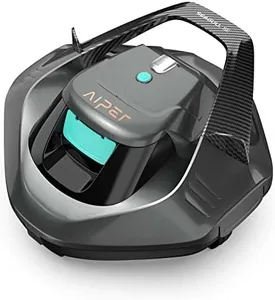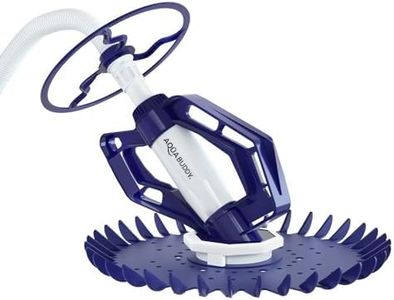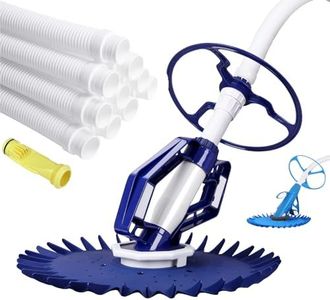We Use CookiesWe use cookies to enhance the security, performance,
functionality and for analytical and promotional activities. By continuing to browse this site you
are agreeing to our privacy policy
10 Best Above Ground Automatic Pool Cleaners
From leading brands and best sellers available on the web.Buying Guide for the Best Above Ground Automatic Pool Cleaners
Choosing an above-ground automatic pool cleaner is a smart move for anyone looking to maintain a sparkling clean pool with less manual effort. These devices save you time and help keep your pool free of debris, algae, and dirt, but picking the one that fits your pool and cleaning needs takes a bit of know-how. The best way to choose is to understand the main features, compare them with your pool’s size, shape, and the type of debris you most often deal with. Once you know what to look for, you’ll feel much more confident making the right selection.Type of CleanerThere are three main types: suction-side, pressure-side, and robotic above-ground pool cleaners. Suction-side cleaners use your pool pump to draw in debris, pressure-side cleaners attach to a return jet and can often pick up larger debris, while robotic cleaners are self-contained and plug into an electrical outlet. Suction models are simple but may not be as powerful, pressure-side models are great for bigger debris like leaves, and robotic cleaners offer the best cleaning performance with the least effort, ideal for busy pool owners. Your choice should depend on how hands-off you want the process to be and the kind of debris typically found in your pool.
Pool Compatibility (Size and Shape)Different cleaners are designed for specific ranges of pool size, shape, and material. Make sure the cleaner can handle the length and shape of your above-ground pool, whether it’s round, oval, or rectangular. Some cleaners are limited in the hose length they can use, and others have trouble maneuvering in tight corners. Knowing your pool’s exact measurements and shape helps you pick a cleaner that can do the job without getting stuck or missing spots.
Cleaning Power (Suction/Pressure/Filtration)Cleaning power refers to how effectively the cleaner removes different types of debris and dirt from your pool. This is usually influenced by how strong its suction or filtration system is, and in robotic cleaners, the motor power. Lower-powered models handle small dirt, sand, and bugs, while higher-powered ones can manage leaves, twigs, and heavier debris. Think about what mainly lands in your pool and pick a cleaner strong enough to handle it without clogging or missing tough spots.
Ease of Use and MaintenanceThis spec is about how simple the cleaner is to set up, run, and take care of. Some models have more parts to assemble, require you to empty debris bags or bins, or occasionally need filter cleaning or hose untangling. Others are more ‘plug and play’ and nearly maintenance-free. If you want a hassle-free experience, aim for units known for simple operation and easy cleaning—ideal if you’re not a big fan of complicated pool gear.
Climbing and Coverage AbilitySome automatic cleaners are only good for cleaning the pool floor, while others can climb the walls or even steps. Floor-only models are fine if your main concern is debris settling at the bottom, but if leaves and dirt cling to the sides, you’ll want a cleaner that can handle vertical surfaces. Consider the shape of your pool: if it’s got sloping walls or steps, look for a cleaner designed for wide coverage.
Energy ConsumptionThis refers to how much electricity or pump power the cleaner uses. Robotic models run on their own motors and take electricity from an outlet, while suction and pressure models depend on your pool’s pump. More efficient models clean quickly and use less energy, which is better if you’re mindful about utility bills or want to be more eco-friendly. If you use your pool often, an energy-efficient cleaner will be more cost-effective in the long run.
